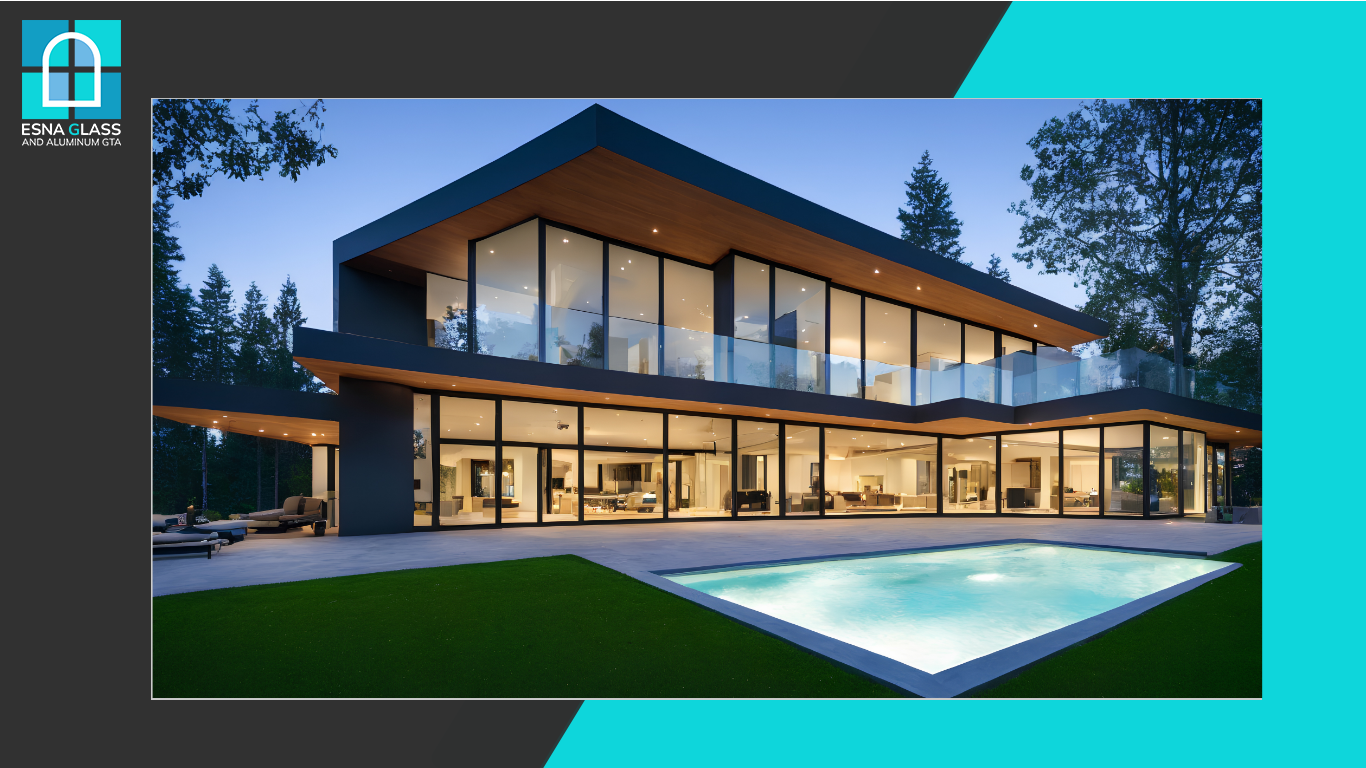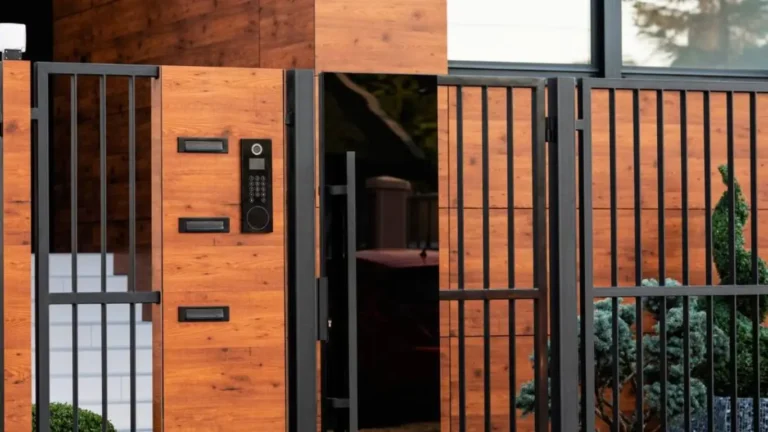As energy costs continue to rise, more and more homeowners and businesses are looking for ways to reduce their energy consumption and costs. One of the most effective ways to do this is by installing thermal aluminum windows. In this article, we will explore what thermal aluminum windows are, how they work, and how they compare to other types of windows, such as vinyl windows and double-glazed windows.
What are Thermal Aluminum Windows?
Thermal aluminum windows are a type of window that has thermal break insulation in the frame, which helps reduce the transfer of heat and cold through the window. The thermal break is made of a non-conductive material, such as polyurethane or vinyl, that separates the interior and exterior parts of the frame. This helps create a barrier that prevents heat or cold from being conducted through the frame, which can significantly improve the window’s energy efficiency.
How does Thermal Aluminum Windows Work?
Thermal aluminum windows work by utilizing thermal break insulation in the frame, which helps reduce the transfer of heat and cold through the window. The thermal break acts as a barrier that prevents heat or cold from being conducted through the frame, which can help reduce the amount of energy needed to heat or cool a building. This can result in significant energy savings and a more comfortable indoor environment.

Thermal break aluminum windows vs. UPVC
UPVC windows are another popular option for energy-efficient windows. However, thermal break aluminum windows are generally considered to be a better option because they are stronger and more durable than UPVC windows. Additionally, aluminum frames offer more design options and can be customized to fit the specific needs of a building. While UPVC windows are less expensive, they are not as durable and may require more maintenance over time.
Thermal Break Material for Windows
The most common materials used for thermal break insulation in windows are polyurethane and vinyl. Polyurethane is a high-density foam that provides excellent insulation and is very effective at reducing heat and cold transfer through the window frame. Vinyl is a less expensive option, but it is also less effective at reducing heat and cold transfer.
Milgard Aluminum Windows
Milgard is a popular manufacturer of aluminum windows that offers thermal break insulation in the frame. Milgard windows are known for their strength, durability, and energy efficiency. They come in a variety of styles and designs and can be customized to fit the specific needs of a building.
Milgard is a leading manufacturer of aluminum windows known for its high-quality, durable products. Milgard aluminum windows are made with thermally broken frames that provide superior insulation and energy efficiency. The thermal break in the frame is designed to prevent the transfer of heat or cold between the inside and outside of the window, which helps keep your home comfortable year-round and lowers your energy bills.
In addition to their energy efficiency, Milgard aluminum windows are also known for their sleek, modern design. The frames are available in a variety of colors and finishes and can be customized to match the style of your home or business. The frames are also easy to maintain, with a durable powder-coated finish that resists chipping and fading over time.
Milgard offers a range of aluminum window styles, including single-hung, double-hung, sliding, casement, awning, and picture windows. Each style is designed to provide maximum ventilation and natural light while maintaining the energy efficiency and durability that Milgard is known for. With a variety of options to choose from, Milgard windows are a popular choice for both residential and commercial applications.

Thermal Break Windows vs. Double Glazing
Thermal break windows and double glazing are both effective at reducing energy consumption and costs. However, thermal break windows are generally considered to be a better option because they offer better insulation and are more effective at reducing heat and cold transfer through the window frame. Additionally, thermal break windows are more durable and require less maintenance than double-glazed windows.
Thermal break windows feature a layer of insulation between the inner and outer frames, which helps reduce heat transfer between the inside and outside of a building. This insulation is typically made from a material with low thermal conductivity, such as polyurethane. This design helps create a barrier that reduces energy loss, improves comfort, and lowers energy costs.
Double glazing, on the other hand, involves two panes of glass with a layer of insulating gas, such as argon, between them. This design also helps reduce heat transfer and energy loss.
One of the main differences between these two options is the level of insulation they provide. While both offer improved energy efficiency, thermal break windows are typically more effective at reducing energy loss. This is because the thermal break provides an additional layer of insulation that double glazing does not have. As a result, thermal break windows can offer better energy savings and improved comfort.
Another key difference between these two options is the cost. Thermal break windows tend to be more expensive than double glazing, largely due to the additional materials and manufacturing processes involved. However, the long-term energy savings and improved comfort can offset the higher initial investment.
Ultimately, the choice between these two options will depend on your specific needs and priorities. At Esna, we offer a variety of high-quality thermal break aluminum windows and double-glazing options to suit any style and budget. Our experienced team of professionals can help you select the perfect windows for your needs and ensure a seamless installation process.

Thermal Break Aluminum Windows vs. Vinyl
When it comes to choosing the right windows for your home or business, there are several factors to consider, including energy efficiency, durability, and cost. Two popular options for window materials are thermal break aluminum and vinyl.
First, let’s back to defining what we mean by thermal break aluminum windows. Aluminum thermal windows have a thermal break insulation layer between the interior and exterior of the window frame. This insulating layer helps reduce heat transfer and improve energy efficiency.
On the other hand, vinyl windows are made from polyvinyl chloride (PVC), which is a plastic material. Vinyl windows have gained popularity in recent years due to their affordability and low maintenance requirements. However, they do have some drawbacks compared to thermal break aluminum windows.
One of the main differences between thermal break aluminum windows and vinyl windows is durability. While vinyl windows are known for their affordability, they tend to be less durable than thermal aluminum windows. This means that over time, vinyl windows may become brittle, crack, or warp, especially in extreme weather conditions.
In terms of energy efficiency, both windows can be energy-efficient, but thermal break aluminum windows tend to be more effective at reducing heat transfer. This is because the thermal break insulation layer creates a barrier that prevents heat or cold from passing through the window frame. As a result, thermal break aluminum windows can help reduce energy bills and improve indoor comfort.
Another factor to consider when comparing these two windows is aesthetics. Vinyl windows come in a limited range of colors and finishes, while thermal break aluminum windows offer a wider range of options, including custom colors and finishes.
In summary, thermal break aluminum windows are a great choice for those looking to improve their energy efficiency and reduce their energy costs. While vinyl windows are less expensive, they do not offer the same level of energy efficiency, durability, and design options as thermal break aluminum windows.

FAQ
Is a thermal break in windows worth it?
Yes, a thermal break in windows is definitely worth it. Thermal break insulation creates a barrier that prevents the transfer of heat or cold from the exterior to the interior of your home, which helps to keep your home comfortable and energy-efficient. This means that your heating and cooling systems will work more efficiently, reducing your energy bills.
Additionally, thermal break aluminum windows are more durable and long-lasting than traditional aluminum windows, making them a cost-effective investment in the long run. Overall, thermal break insulation is a smart choice for anyone looking to improve the energy efficiency and durability of their windows.
Which is better PVC or aluminum?
Choosing between PVC and aluminum windows ultimately depends on personal preference, budget, and specific needs. PVC windows are generally more affordable and offer good insulation, but may not be as durable as aluminum in the long run.
Aluminum windows, on the other hand, are more expensive but are stronger and more resistant to weather conditions. Additionally, aluminum windows can be customized with a range of colors and finishes, making them a popular choice for modern and contemporary designs.
Ultimately, it is important to consider the specific needs of your project and weigh the pros and cons of each material before making a decision.
Where should you align the thermal break of an aluminum window?
The thermal break of an aluminum window should be aligned in the center of the frame, between the interior and exterior parts of the window. This helps create an effective thermal barrier that prevents the transfer of heat or cold from the exterior to the interior of your home. If the thermal break is not aligned properly, it can lead to issues with condensation and heat loss, reducing the energy efficiency of your windows.
Additionally, a properly aligned thermal break can help improve the structural integrity of the window, making it more durable and long-lasting. Overall, it is important to ensure that the thermal break is aligned correctly during the installation process to ensure maximum energy efficiency and durability.
How much more expensive are thermally broken windows?
The cost of thermally broken windows varies depending on the size and style of the window, as well as the type of thermal break material used. In general, thermally broken windows are more expensive than traditional aluminum or vinyl windows, as the added insulation and materials required for the thermal break process increase manufacturing costs.
However, the long-term energy savings and durability of thermal break windows make them a worthwhile investment for many homeowners, as they can help reduce energy bills and improve the overall comfort of your home. The exact cost difference between thermally broken and traditional windows will depend on a variety of factors, and it is best to consult with a window professional to determine the exact cost for your specific needs.
Which type of window has the highest heat loss?
Single-pane windows have the highest heat loss compared to double-pane or triple-pane windows. This is because single-pane windows lack the insulation provided by multiple panes of glass and the insulating gas between them. As a result, single-pane windows allow more heat transfer between the inside and outside of a building, which can lead to increased energy costs and reduced comfort. In colder climates, the heat loss through single-pane windows can be particularly significant, making it important to upgrade to more energy-efficient windows to improve the overall energy efficiency and comfort of your home or building.
Which metal is the best thermal?
Among metals, silver has the highest thermal conductivity, making it the best thermal metal. However, silver is not typically used in thermal insulation applications due to its high cost and other limitations. Copper and aluminum are more commonly used in thermal applications and have relatively high thermal conductivity compared to other metals. Copper is often used in high-end electronics and industrial applications, while aluminum is used in building and construction industries due to its lightweight and corrosion-resistant properties.
Takeaway
In conclusion, when it comes to choosing the right windows for your home or building, it is important to consider the benefits of aluminum window thermal breaks. With their superior insulation, durability, and energy efficiency, these windows are a smart investment for any property owner. At Esna, we offer a wide range of high-quality thermal break aluminum windows to suit any style and budget. Our experienced team of professionals can help you select the perfect windows for your needs and ensure a seamless installation process. Contact us today to learn more about our products and services.




